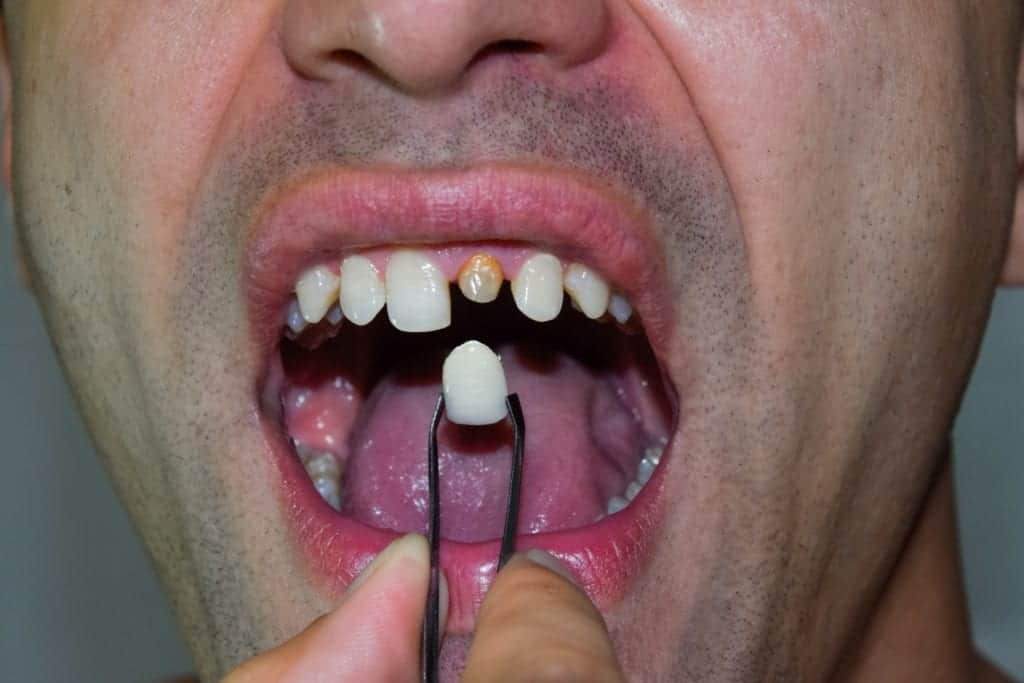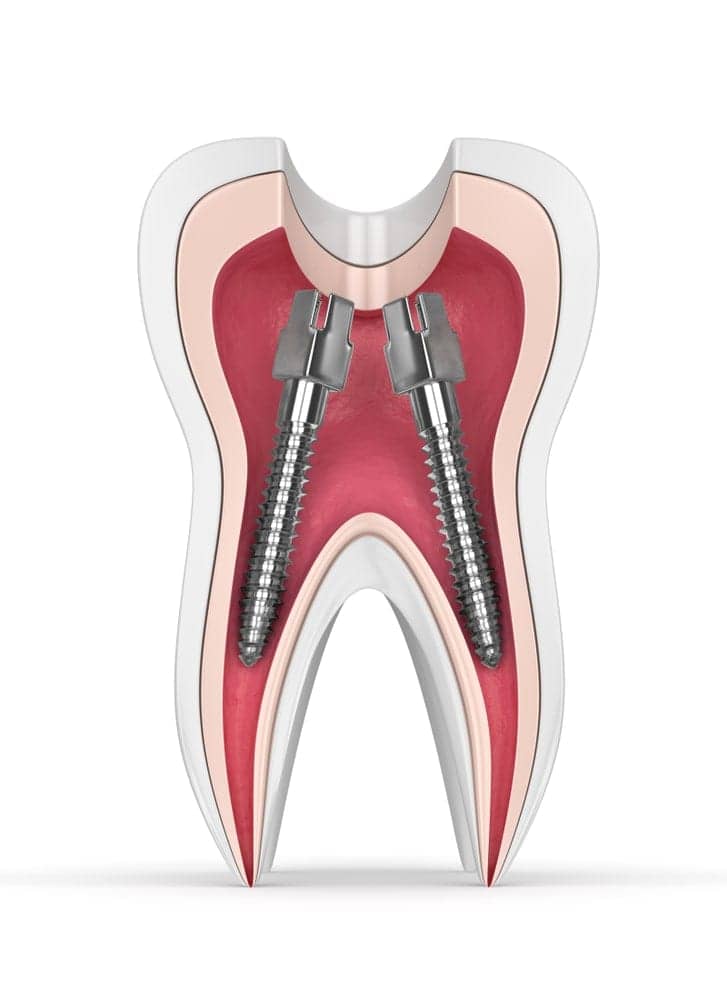Dental crowns are tooth-shaped caps that your general dentist uses to restore teeth that have been significantly affected by damage or decay. Since crowns are adhered to the damaged tooth, this often raises the question of how much tooth is needed for a dental crown. In order to answer this query, we must first evaluate how a dental crown is placed, then we can look at how the placement process can be manipulated to work for different situations.
Before your dentist places a dental crown, they will use dental anesthetics to numb the area. At your request, they may also offer you varying levels of dental sedation. Once you have been adequately prepared for the procedure, your dentist will begin by removing any decayed tissue. The remaining tissue will then be shaped so that it can support a crown.
In cases where tooth decay has reached the innermost layer and caused a pulp infection, a root canal will need to be performed prior to placing the crown. During the root canal, the dental pulp will be removed from the pulp chamber and root canals. The remaining space will then be flushed with an antimicrobial solution before it is filled with a rubber-like material called gutta percha. This provides internal support for the remaining tooth structure, as well as for the crown.

Now that we know the basics of how a dental crown is placed, we can look at ways this process can be modified for varying amounts of natural tooth structure. Since dental crowns are recommended in cases where about ¾ of the tooth is affected by damage or decay, they are designed to fit on minimal remaining tooth structure. Therefore, there needs to be something to cement the crown to and enough tooth to provide internal support.
In cases where there is not enough external tooth structure to adhere the dental crown to, your general dentist may need to build up the tooth using composite resin. Composite resin is a dental material that is applied in layers as a soft putty and then hardened one layer at a time. It is used for composite fillings, as well as for cosmetic bonding. Once enough composite resin has been applied to the remaining external tooth structure, a dental crown can be placed.

In cases where there is not enough internal support, a post-and-core foundation may be placed to strengthen the tooth. This method is used after a root canal has been performed and consists of placing one or more metal posts into the tooth after the gutta-percha has been placed. This provides enough internal support to the tooth so that a dental crown can be placed.
In cases where the tooth needs to be extracted, or is already missing, a dental crown can be placed using a dental implant. First a dental implant is placed in the empty socket and then a metal connector piece is screwed into it. This metal connector, called an abutment, has a metal post on one end that a dental crown is cemented to. This method is called an implant-supported dental crown.
As you can see, dental crowns are highly versatile in terms of how much tooth is needed for their placement. They can be placed when as much as ¾ of the natural tooth has been damaged or decayed, and can also be placed when the tooth is lacking both external and internal support. Additionally, they can also be placed in an empty socket with the use of a dental implant.

Dr. Dennis Laurich has been practicing dentistry for over 40 years. He received his DDS degree from the University of Michigan Dental School and regularly attends oral health care conventions to continue his dental education. This allows him to treat patients with the leading dental technology and methodologies. Additionally, he is a member of the American Dental Association, Michigan Dental Association, and the Detroit District Dental Society.




